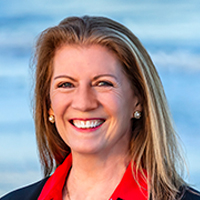
The key difference between proactive and reactive planning is that proactive planning anticipates challenges, while reactive planning responds to unexpected situations. In other words, the difference between the two applications is mainly one’s preparation and accountability.
Dr. Roger Landry, a preventive medicine physician, has spent the last decade lecturing, researching, consulting and writing about successful aging. As financial planners, we should retrain ourselves to help our clients live a purposeful life rather than focusing on what type of long-term care they might need in their years of declining health. What better way to express what we mean by goals-based planning then to have more deliberate conversations now!
The current scenario: Advisors are hard-wired to be reactive fixers. Our technical knowledge kicks in before the conversations about the future do. Why wait to have reactive conversations when it is time for them to move into long-term care, to replace functions that have been lost?
Instead, we should be proactively talking to them now about ways to improve their quality of life, which may help them sustain functioning in the future.
Plan Ahead
Although we may not be able to help them stay healthy and independent enough to avoid long-term care — which also depends a lot on genetics and luck — we can at least encourage them to plan for how they would like to live their golden years and make sure they are ready for whatever lies ahead.
Instead of discussing retirement as one single stage, it may be beneficial to reframe the conversation to reflect multiple stages of those later years. Each stage is characterized by their values and individual issues that they will most likely be managing. Expanding from one stage into three, they are able to establish a clearer vision and potentially envision each separately:
1. Go-Go
2. Slow-Go
3. No-Go
The obvious goal, as outlined in Dr. Landry’s book, “Live Long, Die Short: A Guide to Authentic Health and Successful Aging,” is to do everything in our power to lengthen the first stage and maybe even the second, but, most important, decrease the declining period.
Start With the End
Let us consider a rather unconventional approach: Start with the end. Discuss with your client what they might visualize life looking like in their 85 or more years.
It is estimated that 92% of older adults will have to manage at least one chronic condition and 77% may have to manage the complexities of two or more chronic conditions at that stage (National Council on Aging, “Healthy Aging Facts,” 2014). Knowing the statistics, you could ask:
• Would you look to be reliant on family and friends or pay for in-home or institutional care?
• What might your preferred living arrangements look like?
• Would you consider adopting a family policy agreeing to certain decisions in advance so that when the need arises, expectations have been clarified?
• Are your living will and power of attorney documents in order?
• Have you expressed and shared your legacy wishes, beyond what is outlined in legal documents (funeral and burial wishes, for example)?
In looking ahead to the Slow-Go period, advisors can offer multiple resources and steps to their clients that might help them maintain their health and fitness. It is even more imperative at this stage to ensure healthy habits have been thought through and adopted as a client’s ability to Go-Go subsides.
This does not mean surrendering to this stage. Lifestyle changes can prevent chronic diseases before they occur. This requires focus, commitment, and intention.
“Most of the fear and anxiety around aging is the ambiguity of what is going to happen next.”
Successful Aging
Dr. Landry lists 10 tips for successful aging:
1. Avoid being sedentary
2. Take every advantage to move around
3. Challenge your brain
4. Stay connected; we are social beings
5. Lower your risks
6. Never act your age
7. Wherever you are, be there in the present
8. Find your purpose
9. Have children in your life
10. Laugh
The National Council on Aging also provides an AgeWell Planner to help keep you up to date and motivated.
Advisors seem to underestimate the dramatic shift a client faces from the income-producing years to the Go-Go years. So choose words carefully, as vocabulary shapes the conversation and sets expectations (“stepping down” vs. “recreating,” for example).
This is the time that you want to get used to the idea of adapting to whatever comes your way and that you are sitting in the envious position of continual reinvention.
Instead of viewing this stage as no longer receiving a paycheck and relieving themselves from the daily grind, you might consider discussing what activities are most meaningful to them and helping them map various scenarios and possibilities to where their personal desires meet their financial realities. Changing your mind again and again at this stage is a luxury, not a curse.
The Three Cs
Suggest that your clients focus on the Three Cs:
• Community: Meet new people, take a class, get out of the house.
• Control: You are now the only one making decisions for yourself (income, health, your schedule). Choose wisely, and you can adjust at any time when necessary
• Contribution: Be part of something bigger than yourself. It has been proven that giving back raises your happiness.
Planning an entire life around being retired is rather overwhelming. Most of the fear and anxiety around aging is the ambiguity of what is going to happen next. Breaking this phase of life into three stages may release endorphins that trigger adaptability and calm.
It is unreasonable to suggest that we, as humans, can foresee every single threat. And frankly, proactive planning requires more time and discipline. However, weighing the consequences, which would you choose?







